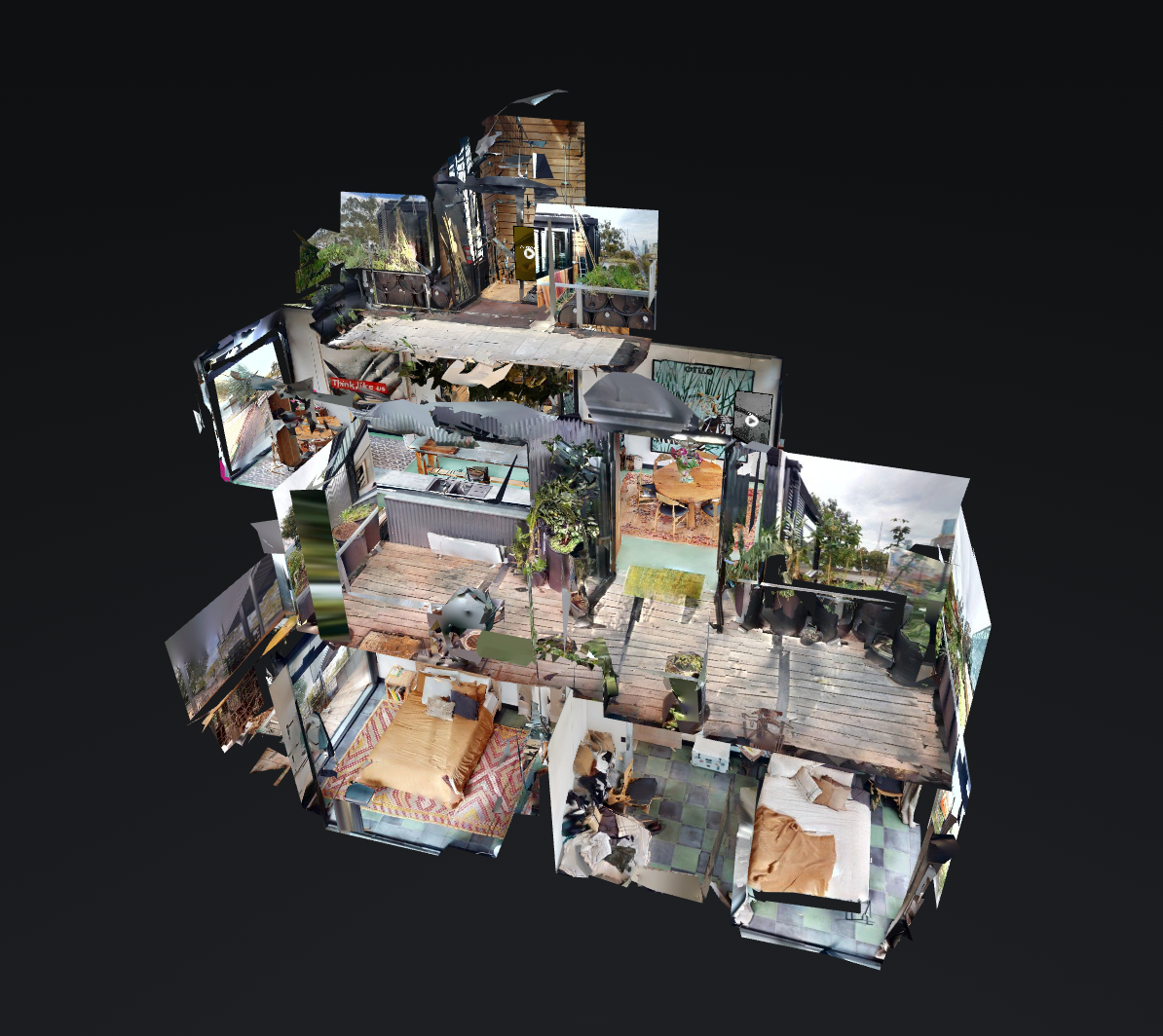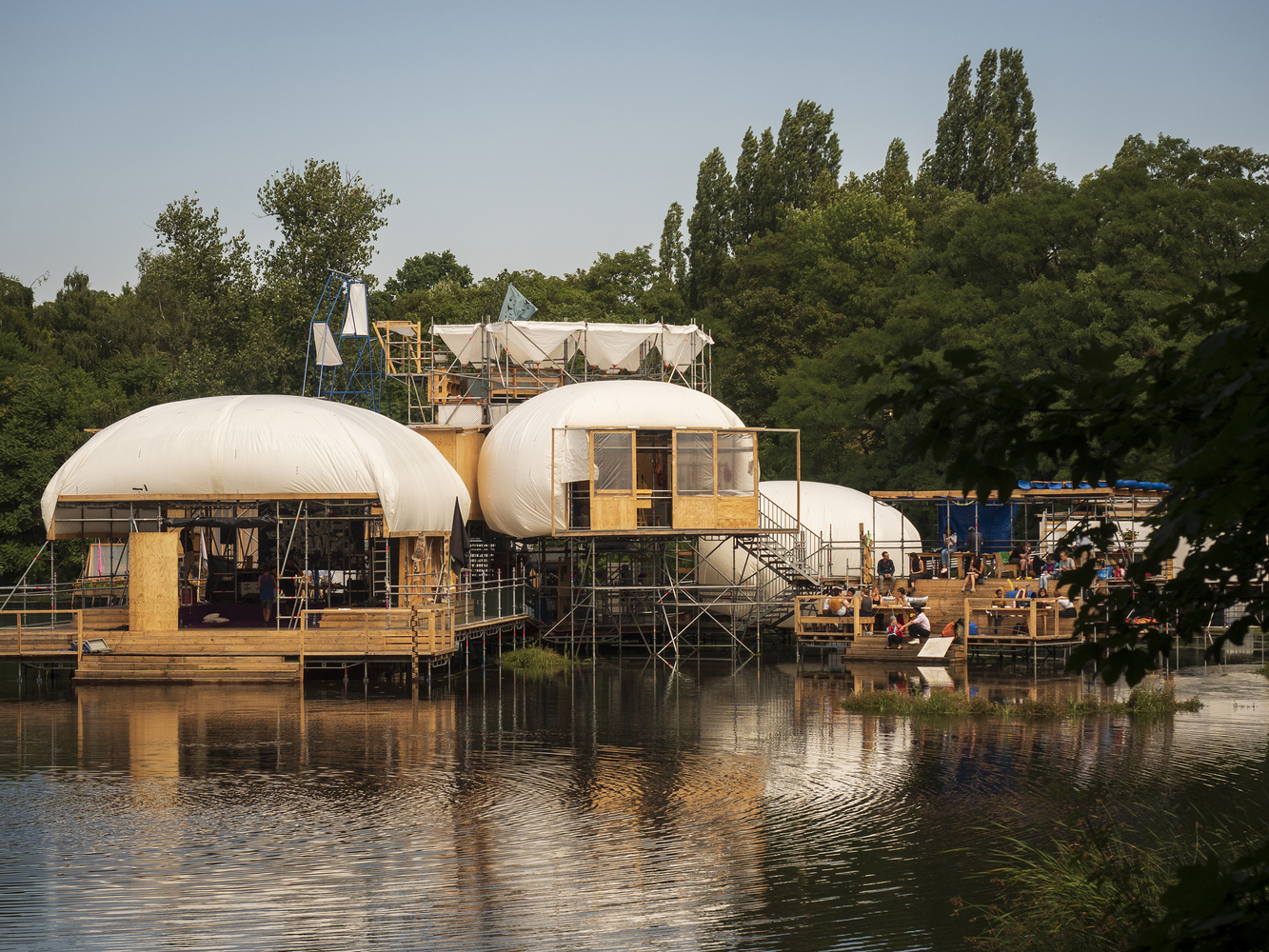— Alive in the sunshine
I recently read Our Shared Storm by Andrew Dana Hudson, a speculative fiction novel based on each of the five climate-modelling scenarios in the latest IPCC report. It’s got me thinking obsessing a little about solarpunk!
Solarpunk is an optimistic vision of the future where we’re in dynamic balance with environmental systems. It’s polyphonic, abundant, collective, anti-capitalist and decolonial. What I like about it is that it’s not just an aesthetic or genre or utopian vision for the future, it’s something you can do and be in the present. In Jay Springett’s words:
Solarpunk as a movement is building new futures in the minds of individuals but also creating and inspiring communities to DIY their own better futures into existence from the bottom up.

Solarpunk fiction
I think most of the science fiction I read these days could be defined as solarpunk. This list of solarpunk canon by Paul Fletcher Hill reads like a list of my favourite books:
- The Earthseed series (Parable of the Sower and Parable of the Talents) by Octavia Butler
- The Mars trilogy (especially Green Mars) by Kim Stanley Robinson
- The Ministry for the Future by Kim Stanley Robinson
- Blockchain Chicken Farm: And Other Stories of Tech in China’s Countryside
by Xiaowei Wang - The Dispossessed by Ursula K Le Guin
- How to Blow Up a Pipeline by Andreas Malm
- Studio Ghibli’s Nausicaä of the Valley of the Wind
(I’d add Station Eleven and Half Earth Socialism as well.)
Solarpunk societies
In Our Greatest Political Novelist, Tim Kreider outlines Kim Stanley Robinson’s usual ingredients for his [solarpunk] utopias:
He scavenges ideas from the American Constitution, the Swiss confederacy, “the guild socialism of Great Britain, Yugoslavian worker management, Mondragon ownership, Kerala land tenure, and so on” to construct his utopias.
Most of these utopias include:
- common stewardship—not ownership—of the land, water, and air
- an economic system based on ecological reality
- divesting central governments of most of their power and diffusing it among local communities
- the basics of existence, like health care, removed from the cruelties of the free market
- the application of democratic principles like self-determination and equality in the workplace—which, in practice, means small co-ops instead of vast, hierarchical, exploitative corporations—and,
- a reverence for the natural world codified into law.
While in Berlin earlier this year I saw Adam Greenfield’s lecture at the Weizenbaum Conference. I missed the first bit of it, which apparently was very doomy, but made it for the second half where he talked through his vision for the future, which I would argue is a solarpunk one:
- Local community infrastructure, made/adapted/reused from available materials
- Short supply chains
- Independence from the grid
- Lightweight, convivial technologies
- Local knowledge of how to build and maintain systems
- An ethos of maintenance, repair and mutual care
Solarpunk now!
A few places I’ve visited this year that have tangibly felt solarpunk:
The Future Food System house in Melbourne
A self sustaining, zero waste, productive house that demonstrates the potential of our homes to provide shelter, produce food and generate energy.

The Floating University in Berlin
A series of DIY structures floating in a rainwater retention basin next to the former Tempelhof airfield.
An inner city laboratory for collective, experimental learning, knowledge transfer and the formation of trans-disciplinary networks to challenge routines and habits of urban practices.

documenta 15
This year’s documenta was directed by a collective from Indonesia called ruangrupa and centred around the values of lumbung.
lumbung, which directly translates as “rice barn”, refers to a communal building in rural Indonesia where a community’s harvest is gathered, stored and distributed according to jointly determined criteria as a pooled resource for the future.
The lumbung practice enables an alternative economy of collectivity, shared resource building, and equitable distribution. lumbung is anchored in the local and based on values such as humor, generosity, independence, transparency, sufficiency, and regeneration.
Further reading
- Anthem of the Sun by Olivia Rosane
- Is Ornamenting Solar Panels a Crime? by Elvia Wilk
- On Solarpunk by Paul Fletcher-Hill
- Life in the Future Beyond the Rusted Chrome of Yestermorrow by Jay Springett